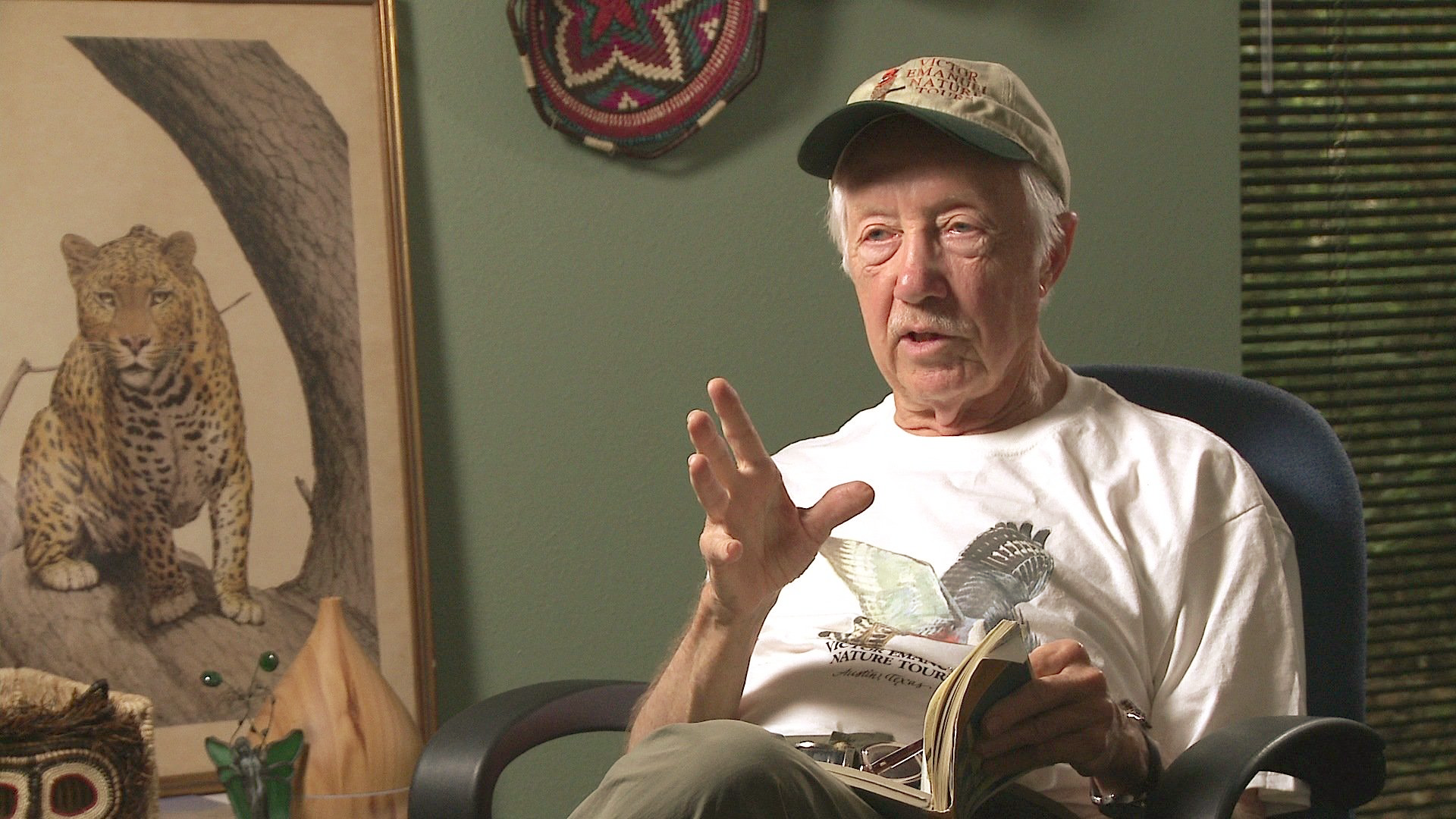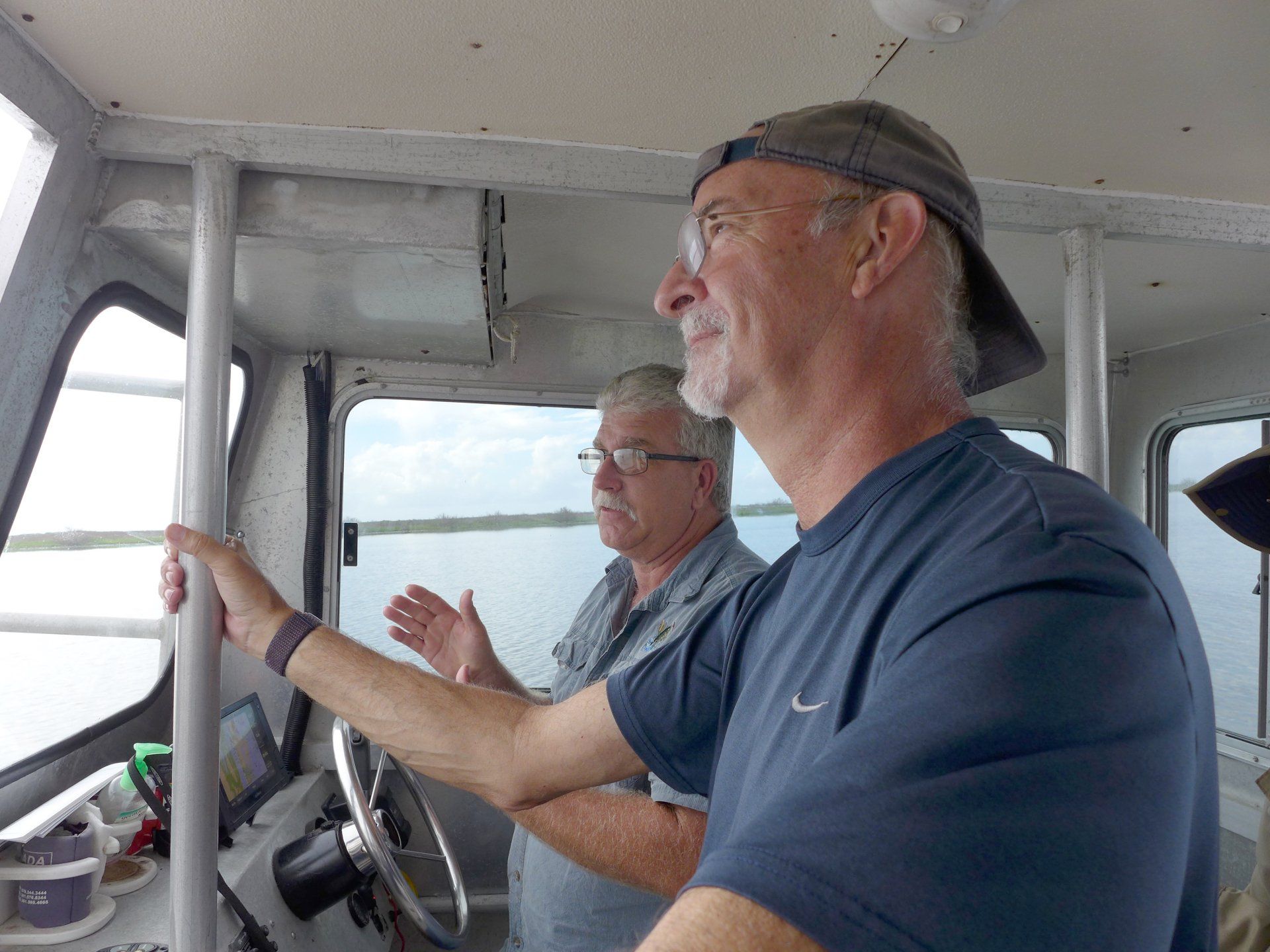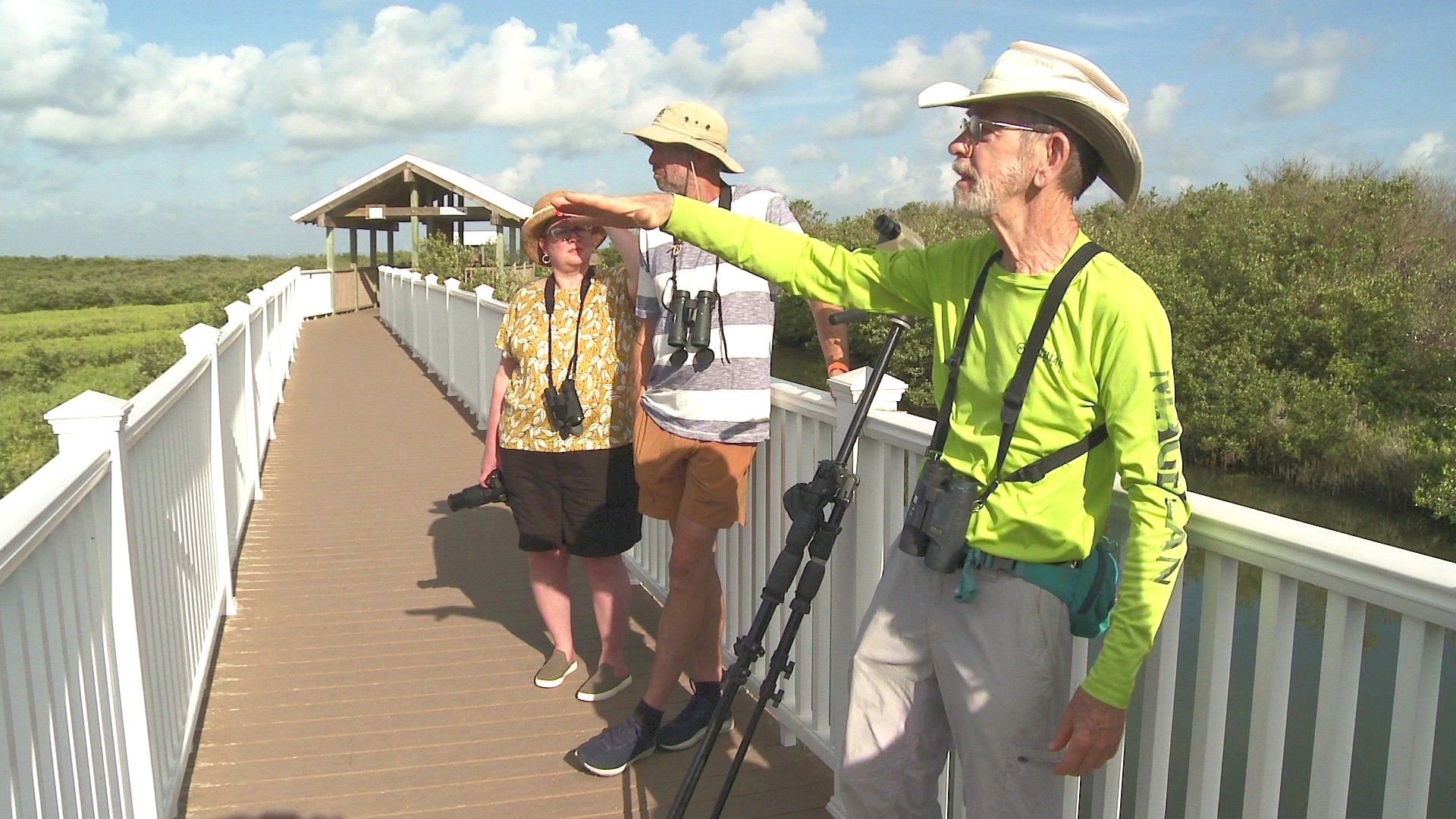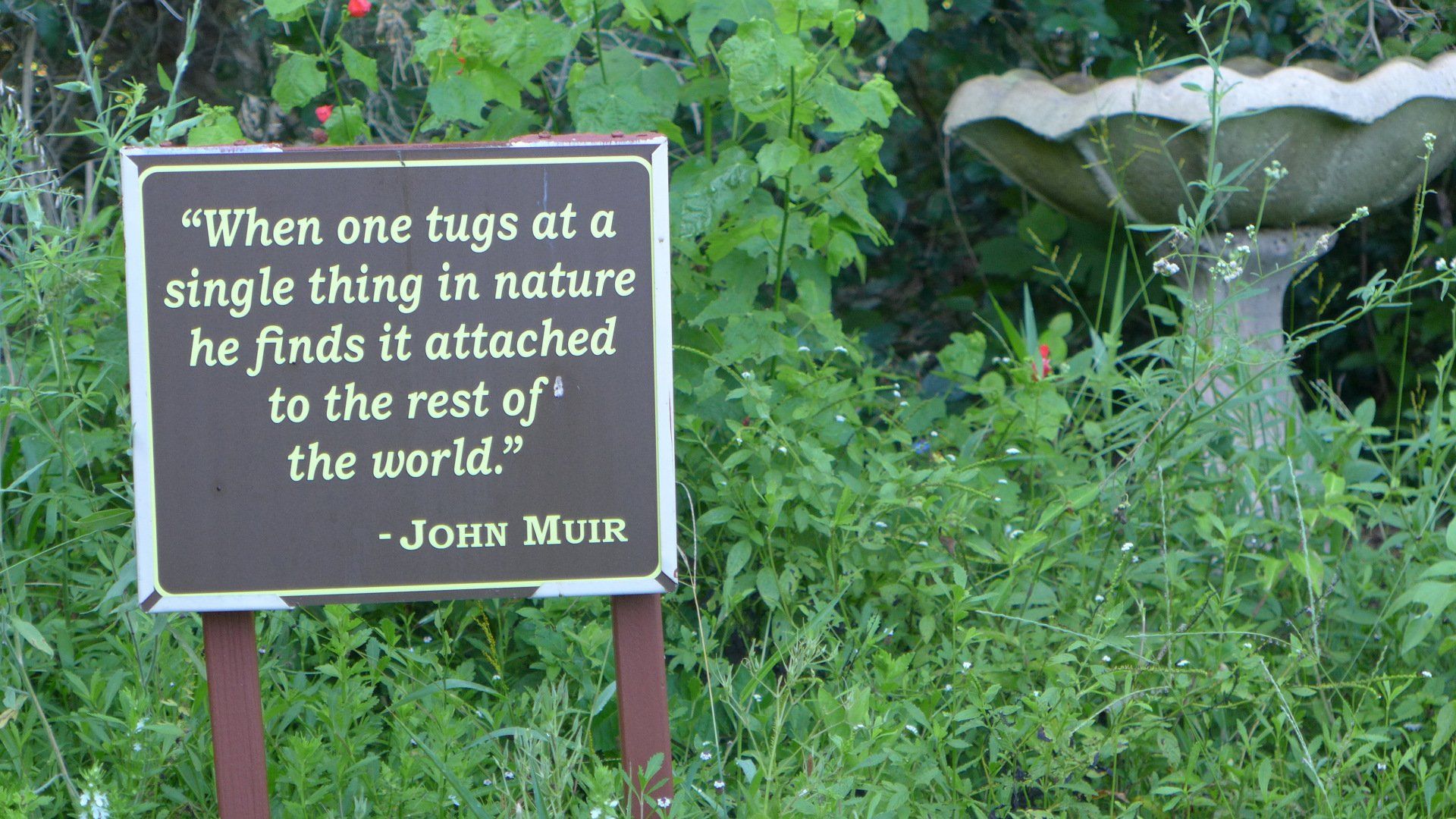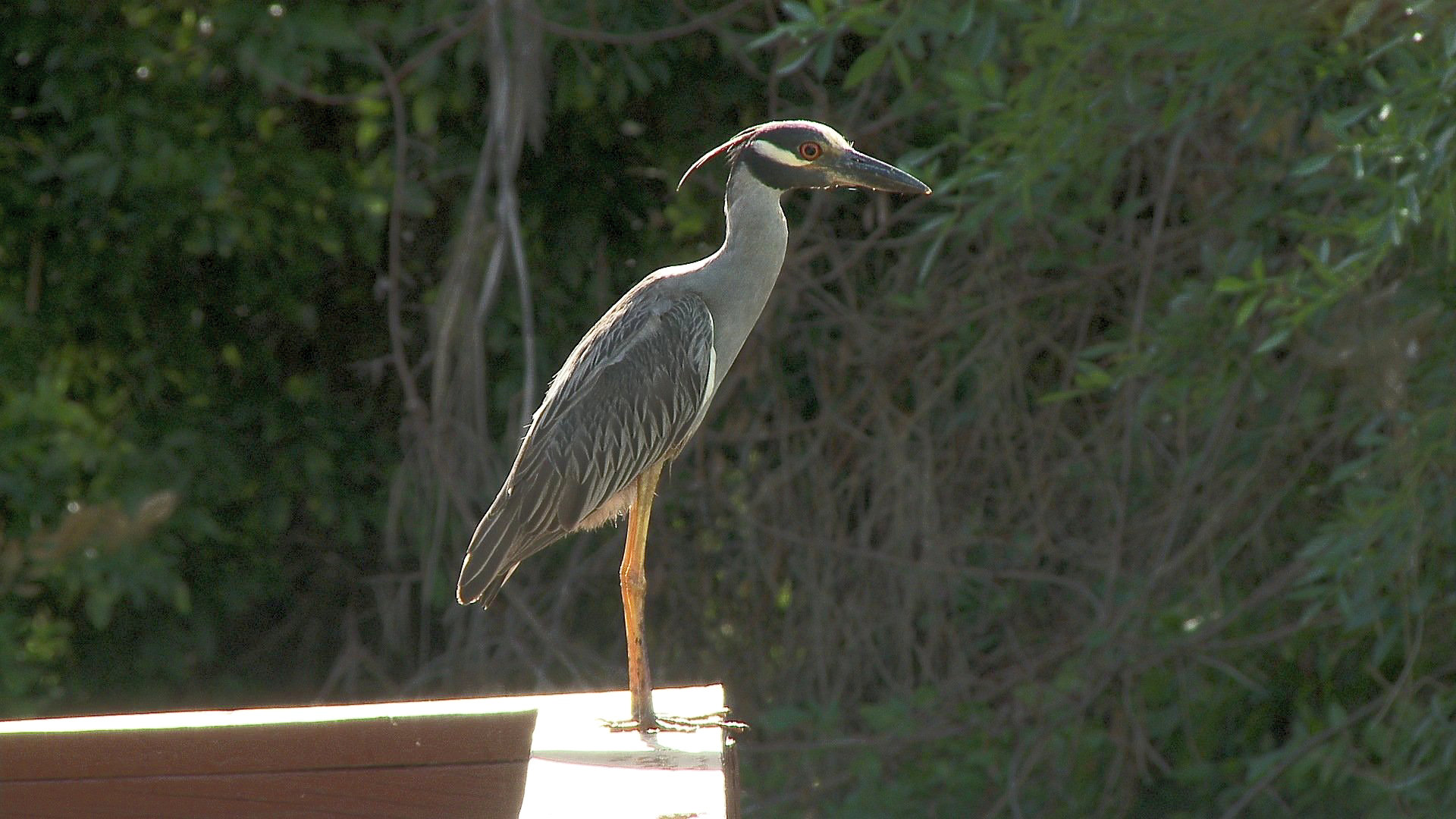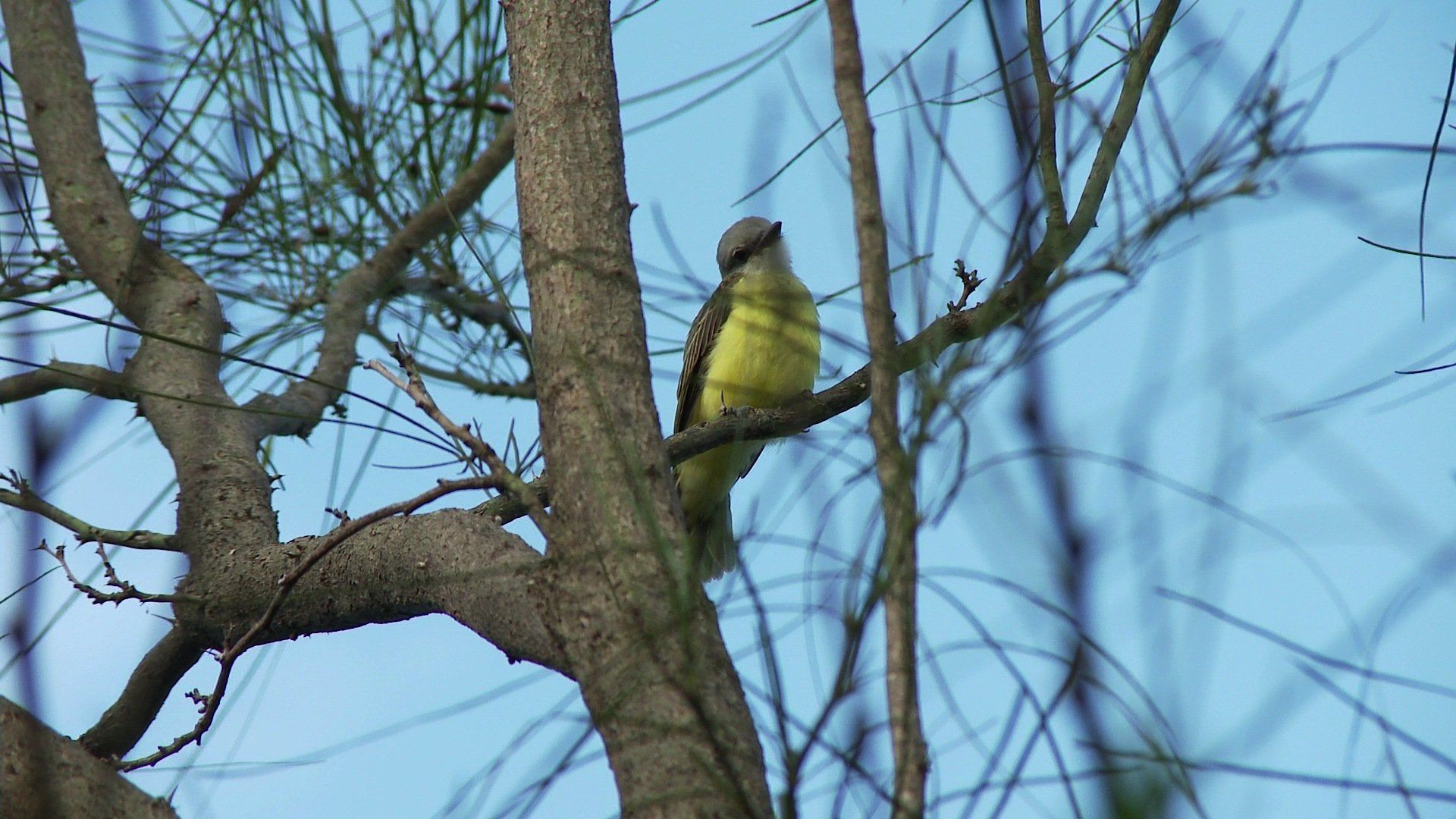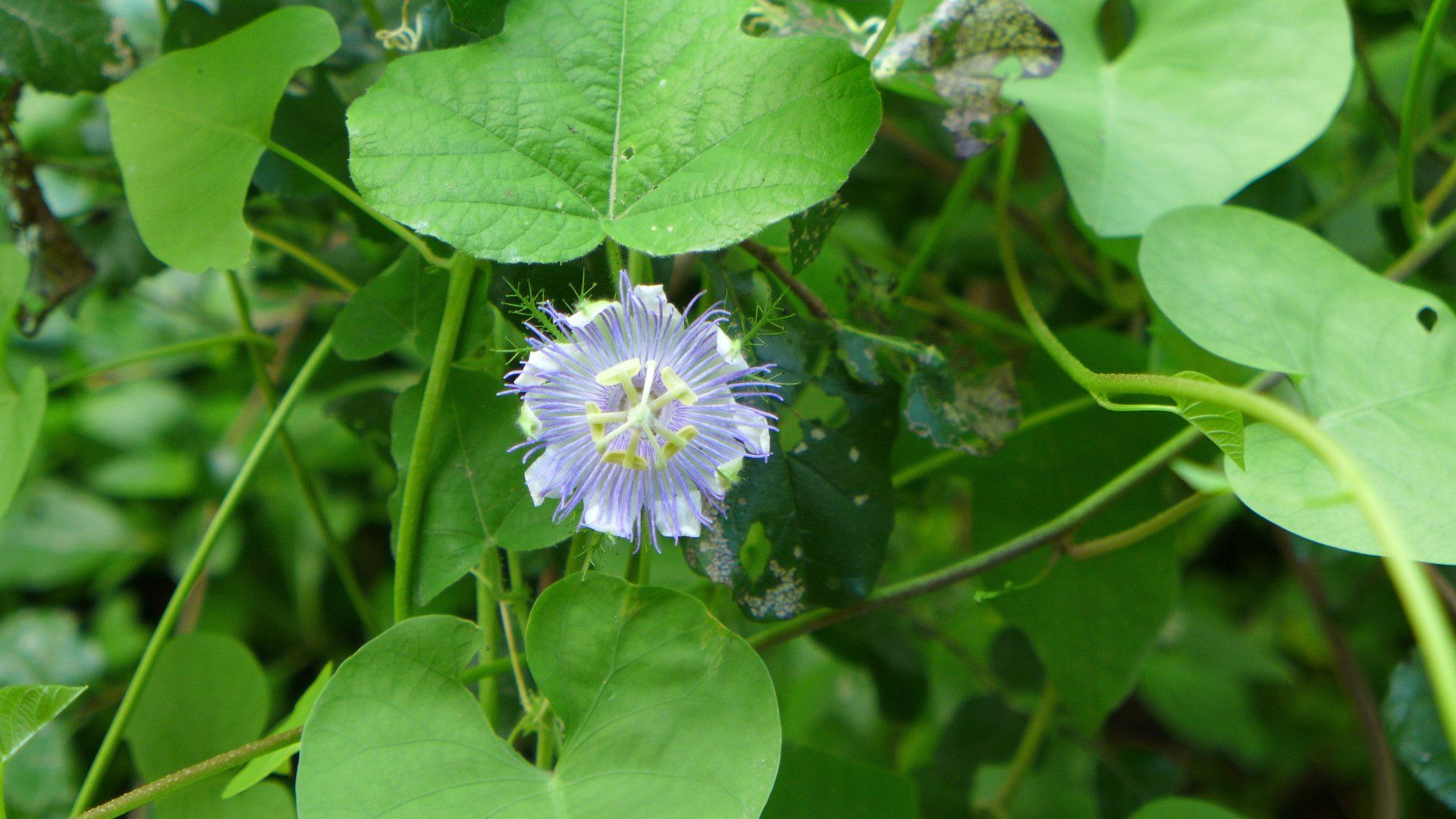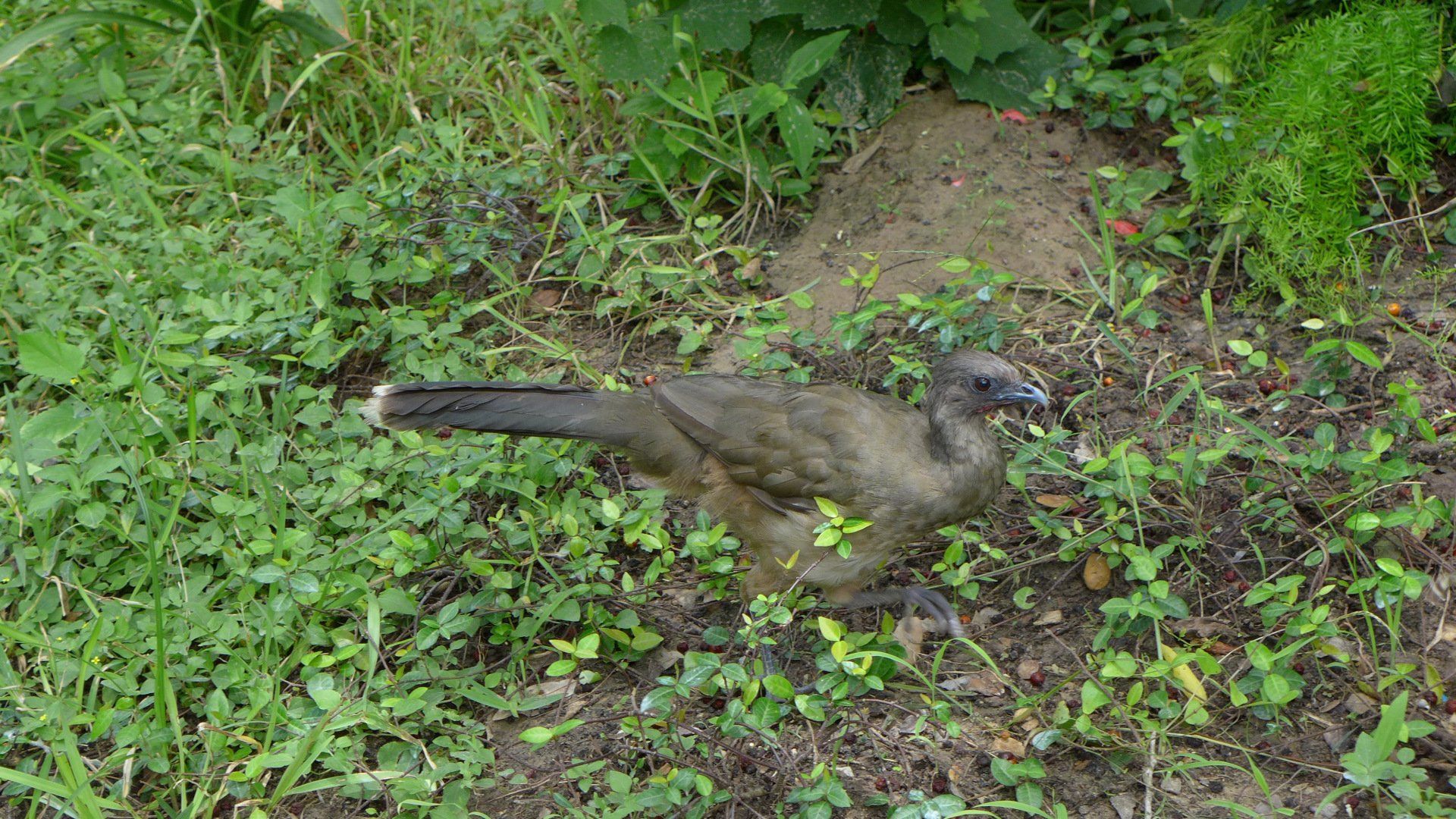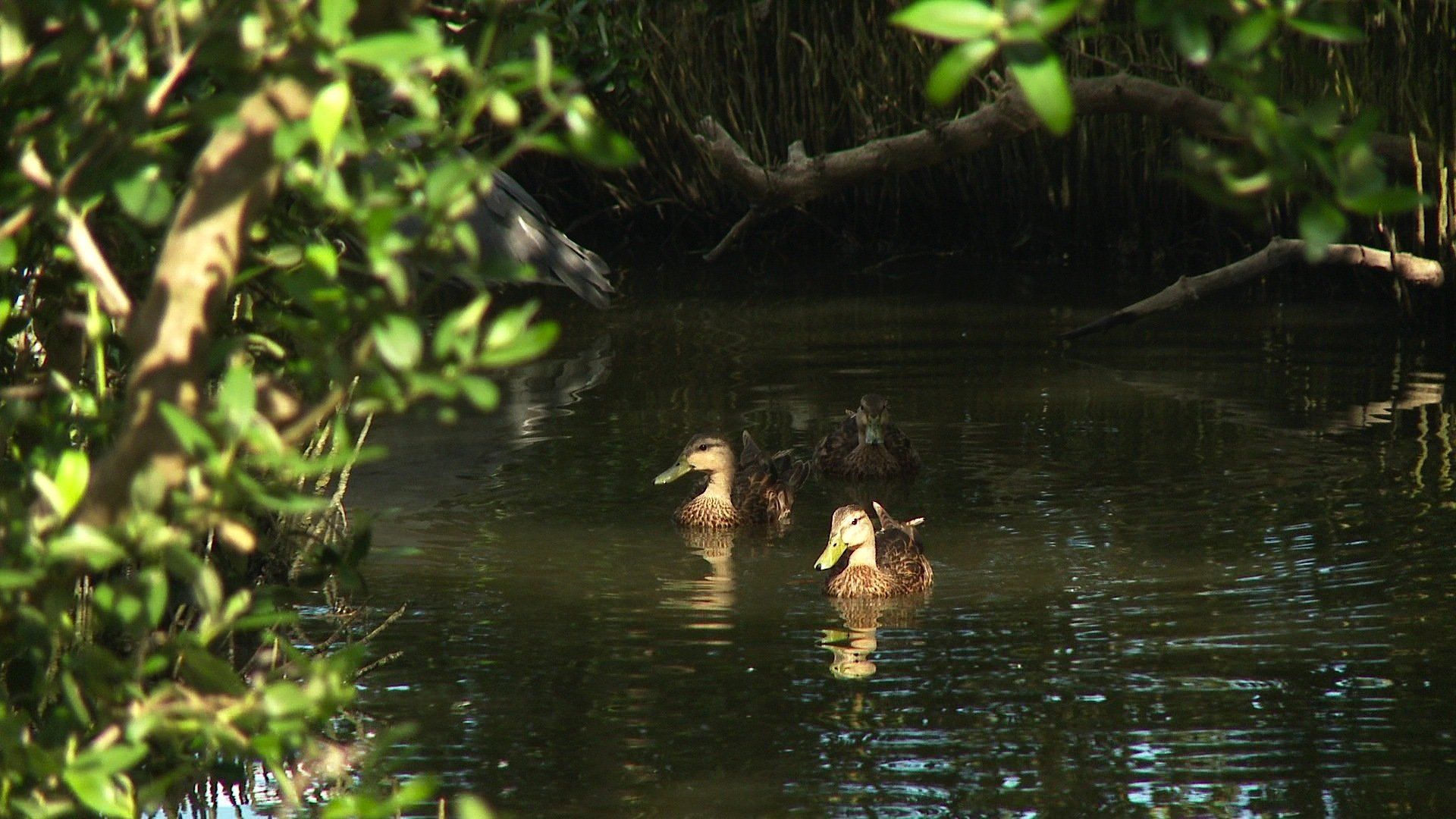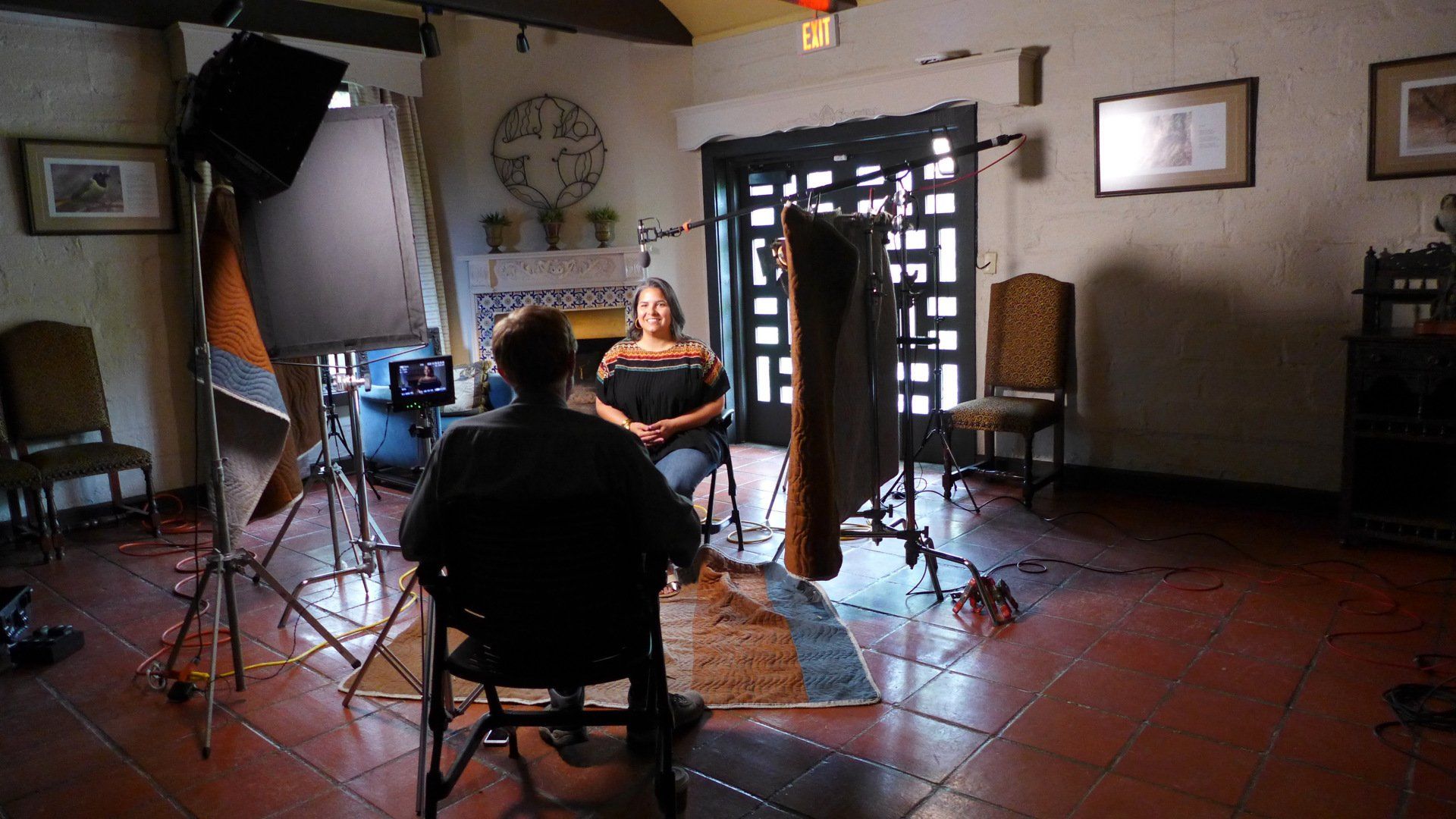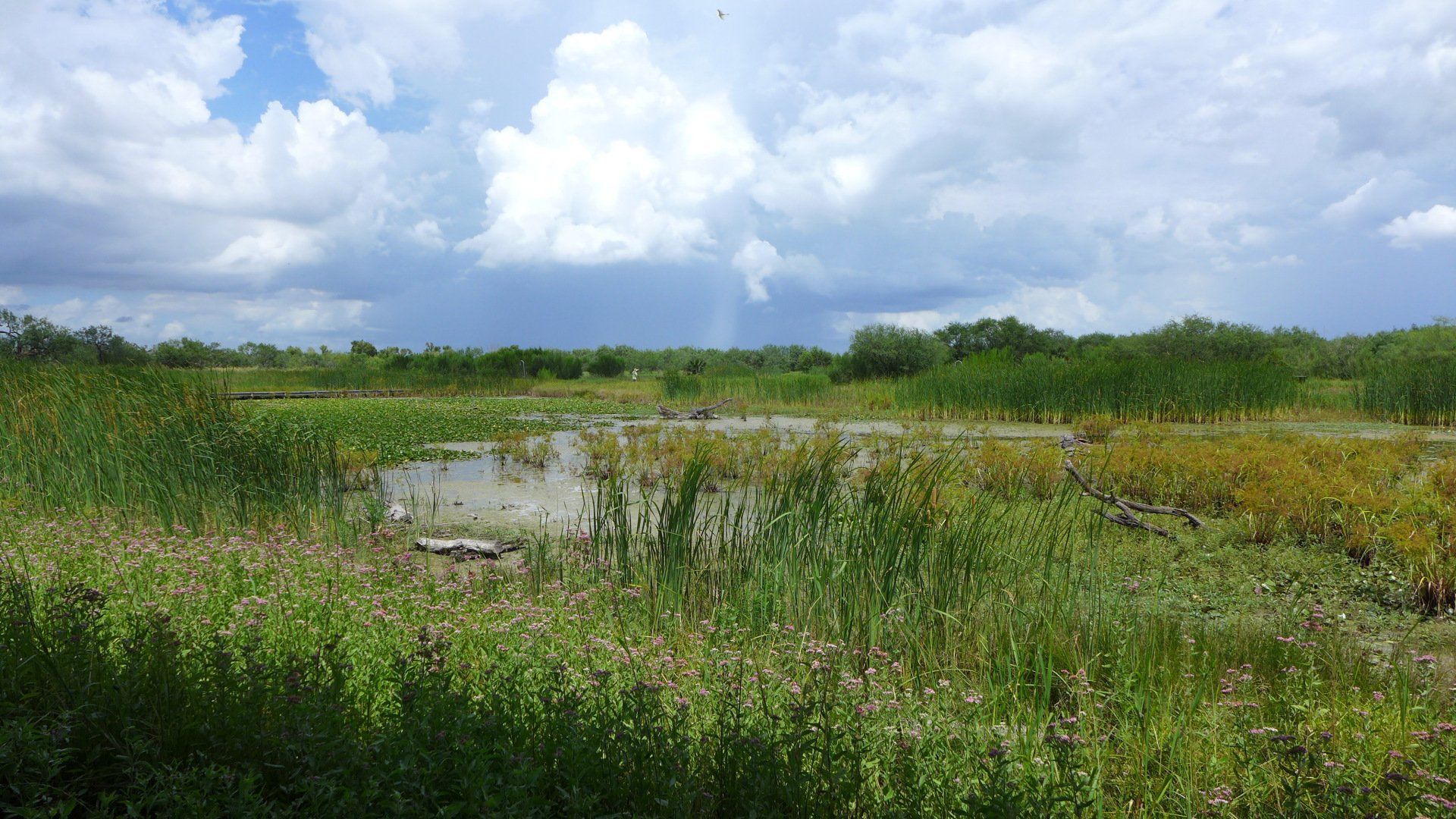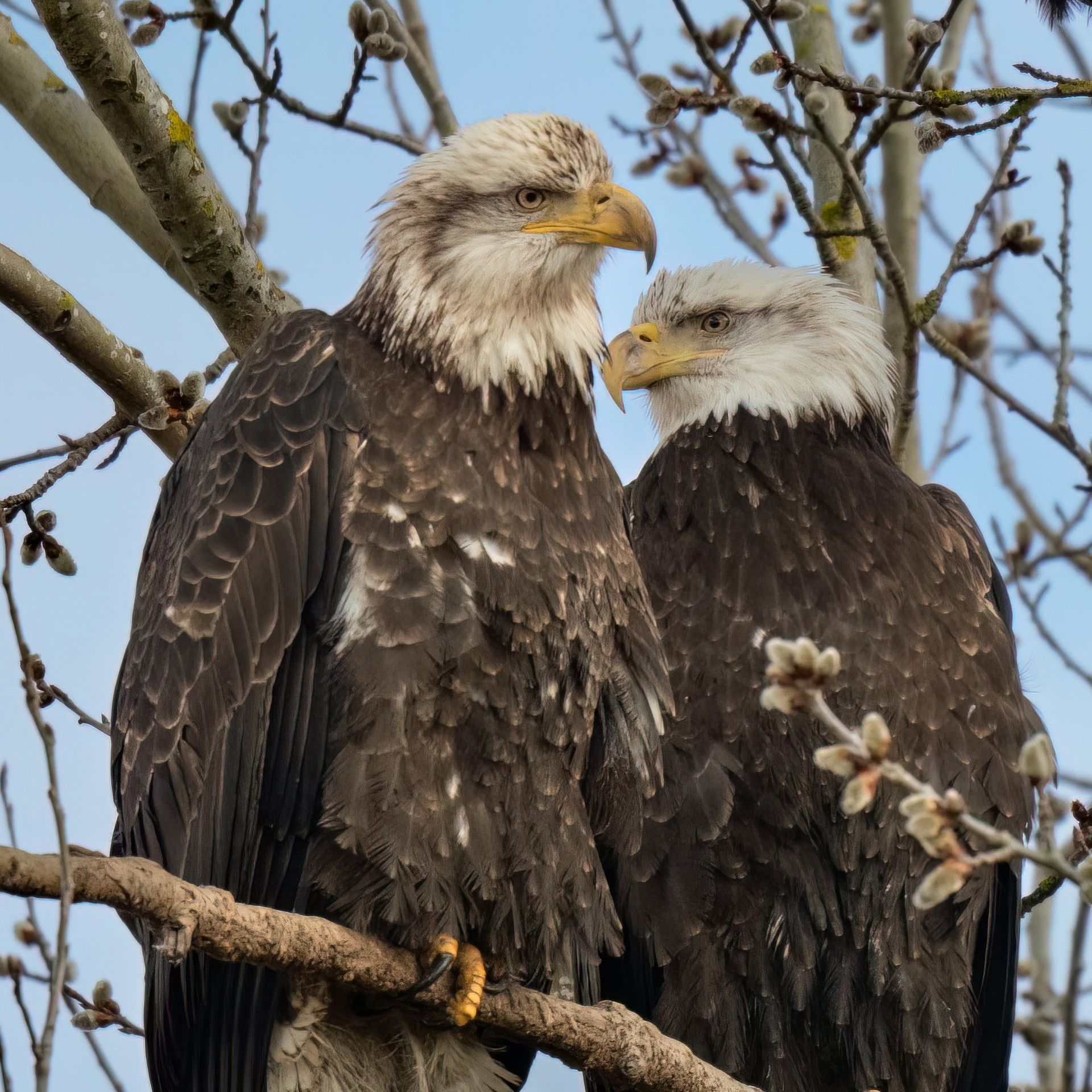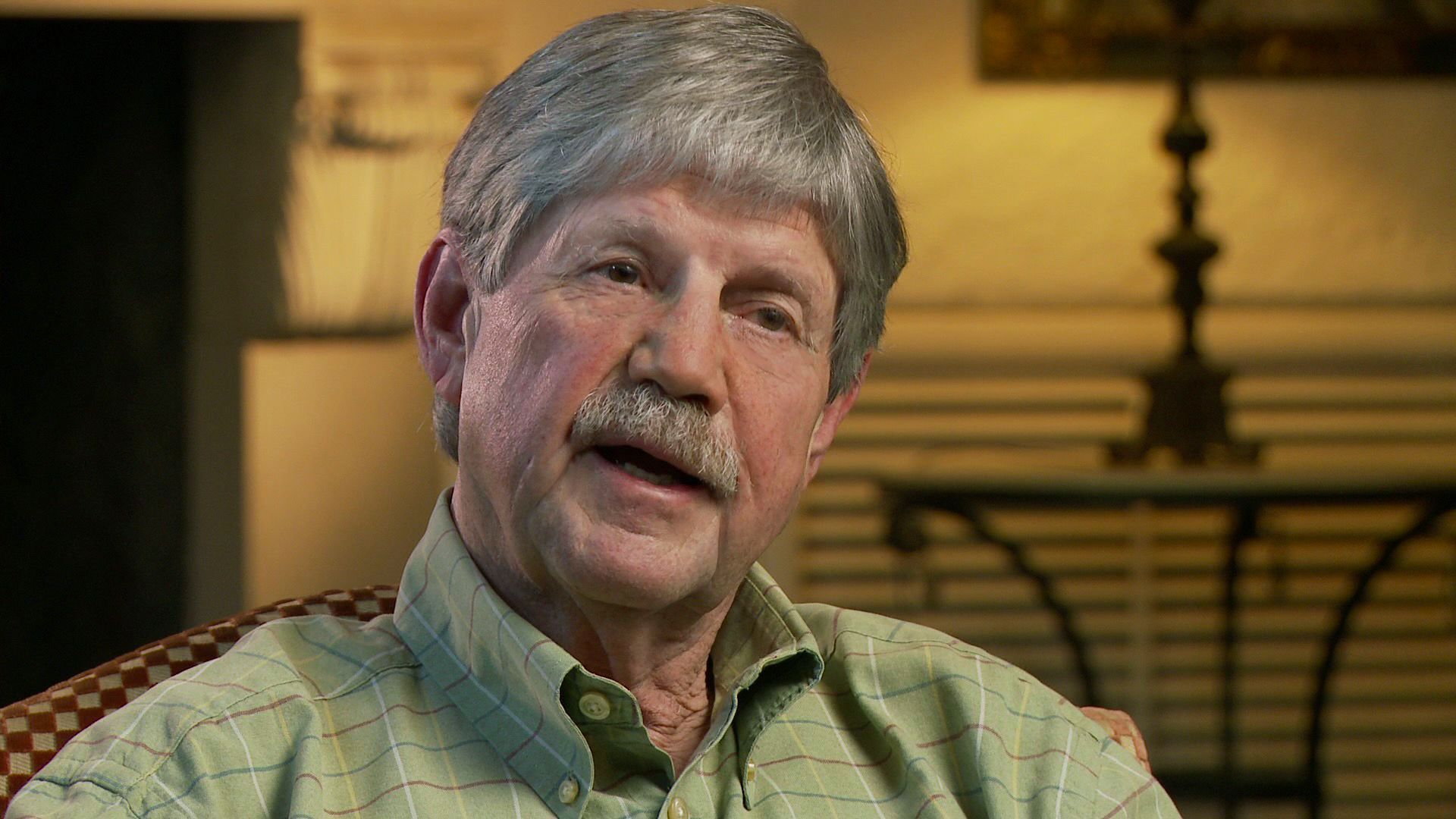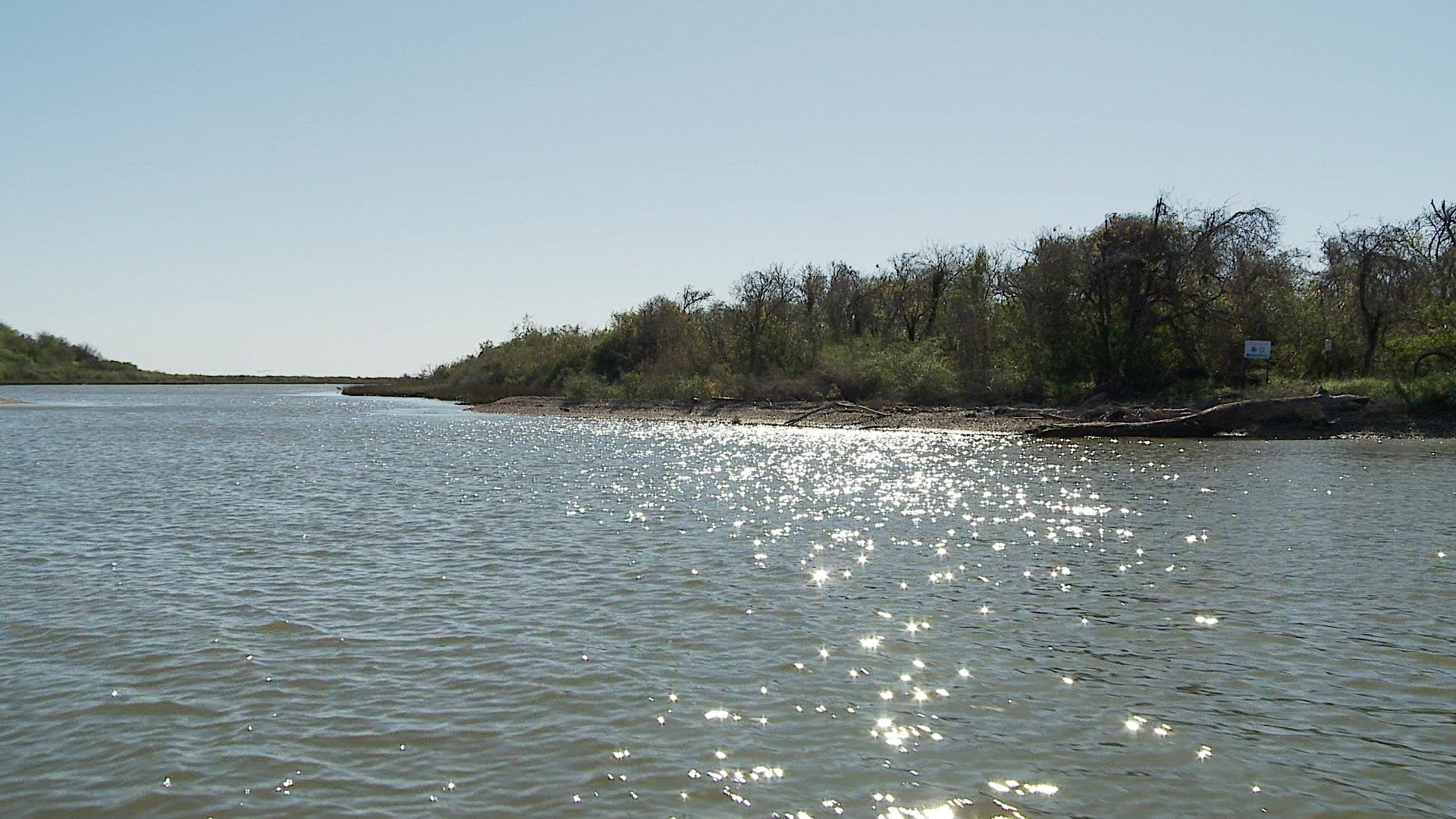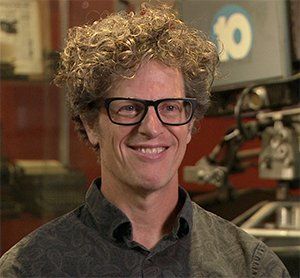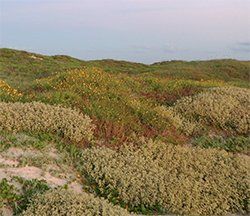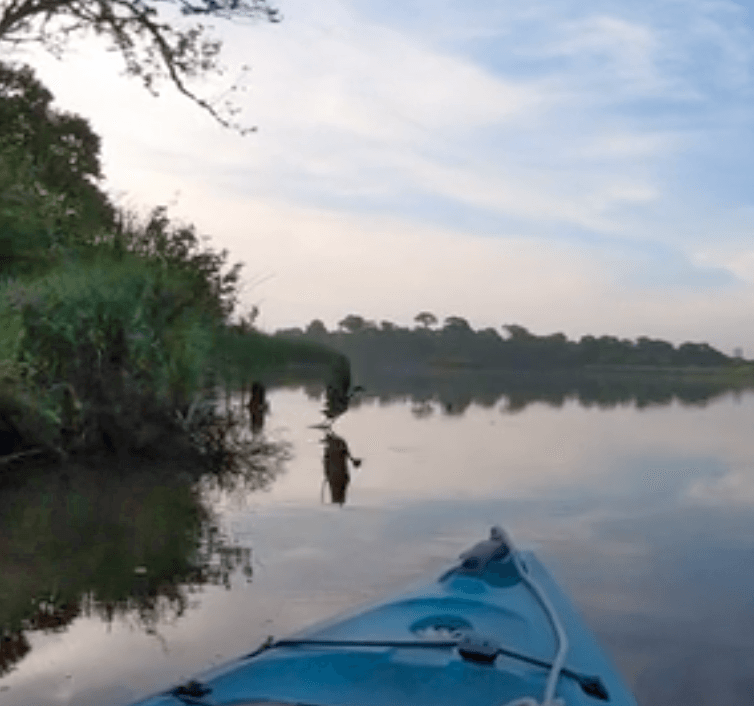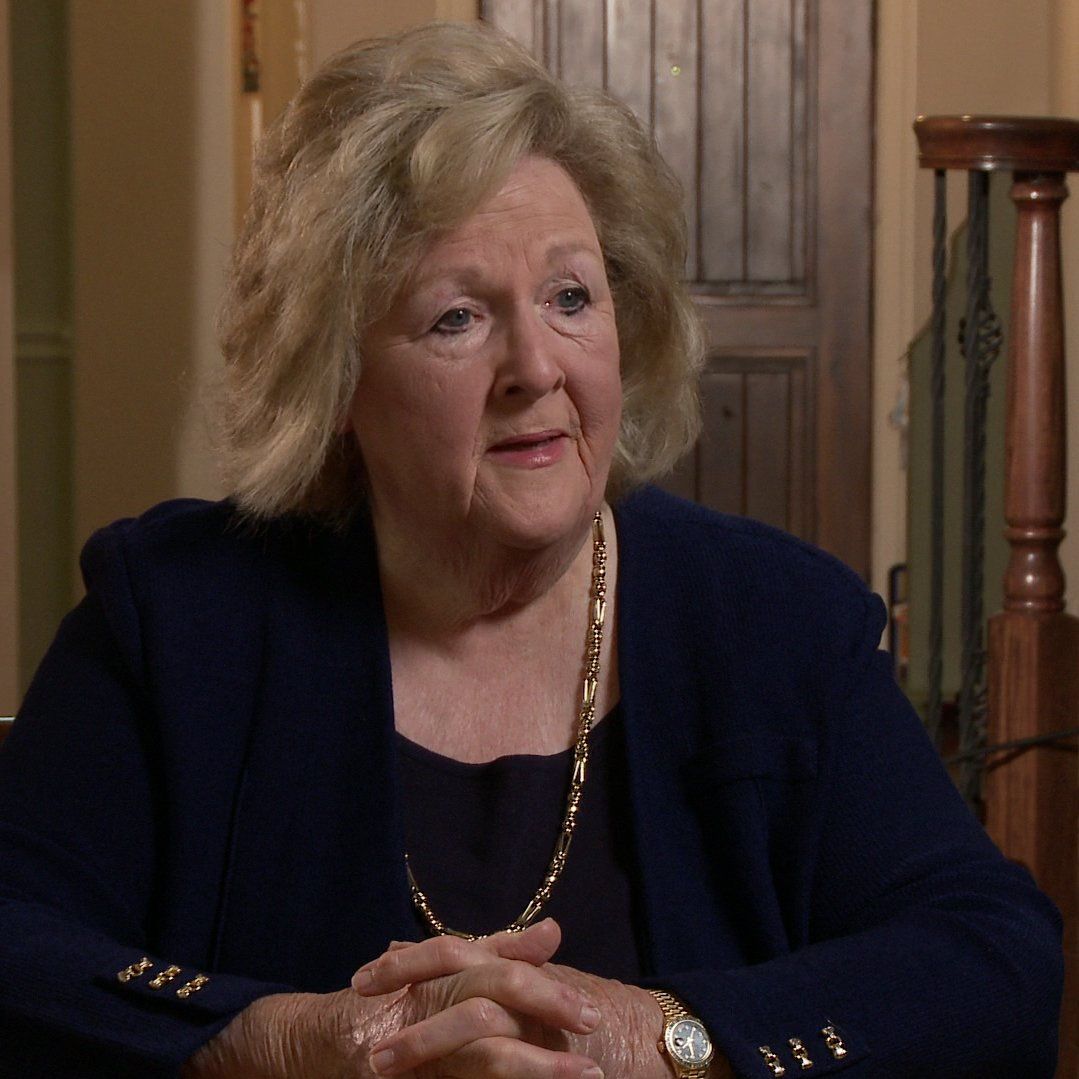Ecotourism
Economic value for habitat
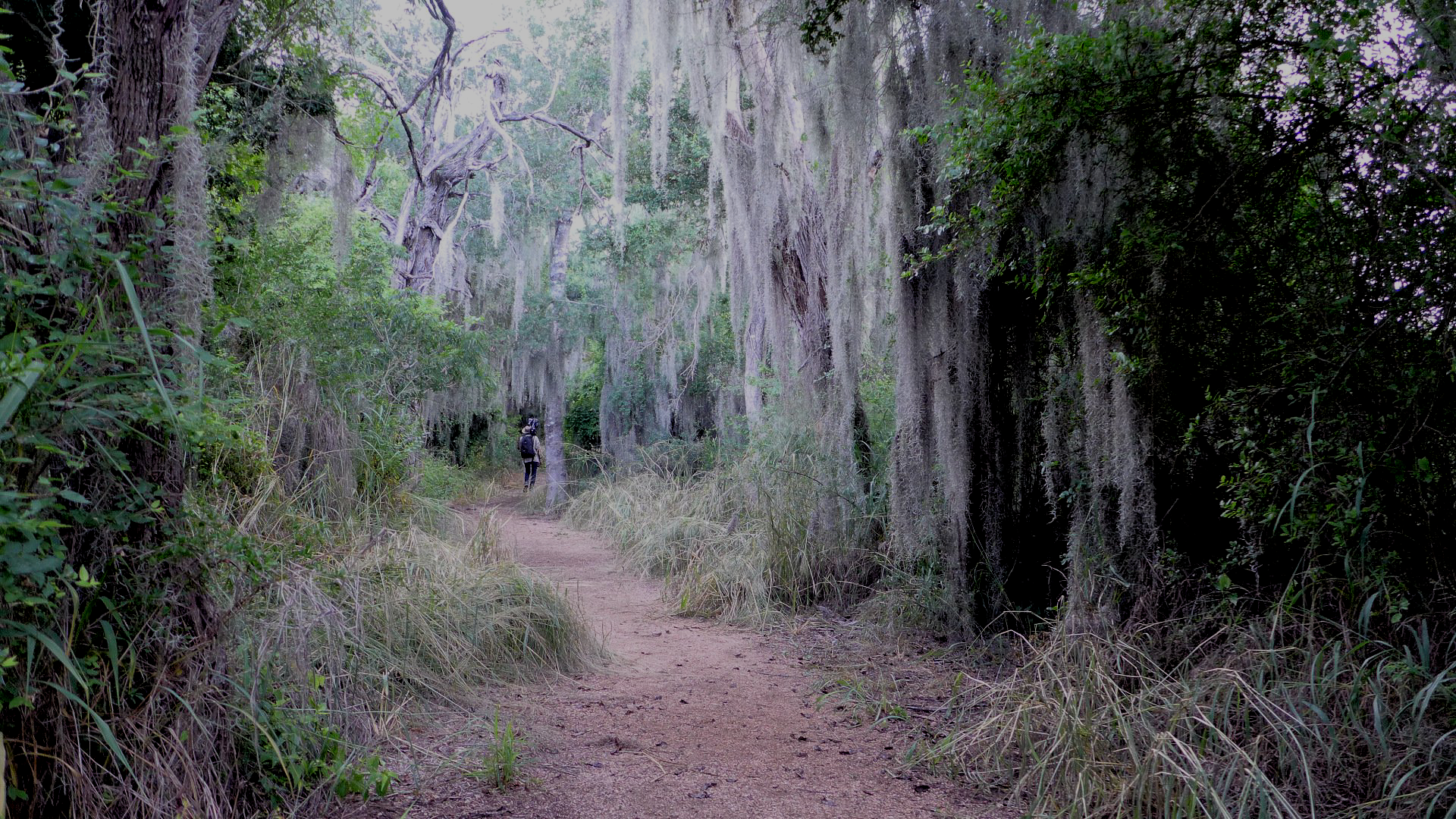
One facet of Jim Blackburn's environmental initiatives is support for ecotourism, both as a means of educating the public to care about nature and offering local economic growth through an industry that values habitat as a natural treasure and a bulwark against climate change.
Our crew started the shoot with an interview of Victor Emanuel one of the first and most successful practitioners of birding ecotourism. Victor waxed eloquent about how he acquired his love for birds from his mother and began his journey to make birding ecotourism work as a business, while negotiating other journeys in his life including involvement in progressive politics. Now in his early '80s, Victor is as spry and enthusiastic about birding as ever.
We next travelled to Rockport where we visited the barrier island nesting grounds for the whooping cranes with Capt. Kevin. Despite taking our trip during the nonmigratory months this area, Capt. Kevin was able to take us to wonderful pockets of nesting birds, and even a lone whooper—a juvenile who had decided to stay in the refuge over the summer…those teenagers, just can't convince them to do anything!
Rio Grande Valley
Then we set off for the Rio Grande Valley where we would visit six birding sanctuaries: Quinta Mazatlán World Birding Center, Bentsen-Rio Grande Valley State Park, Santa Ana National Wildlife Refuge, Frontera Audubon, Estero Llano Grande, and the South Padre Island Birding And Nature Center. To present the wonderful network of parks and refuges that make up this internationally known ecotoursim heaven for birding, we interviewed Debralee Rodriguez from the Valley Land Fund and John Brush, the Urban Ecologist for Quinta Mazatlán.
Debra detailed the mission of the land fund to protect habitats and their inhabitants through outreach and education. One innovative approach uses annual wildlife photo contests. The contests educate both young and old about the wonderful natural heritage in the Rio Grande Valley. In addition, the land fund enlists landowners to play a role in conservation by promoting land easements to protect habitats. These are are voluntary agreements between a landowner and a qualified organization like Valley land Fund to restrict development of a property.
John Brush of Quinta Mazatlán was an equally eloquent proponent for habitat preservation in the Valley. John knew every lush nook and cranny of the grounds of Quinta Mazatlán and showed us its wonders in an early morning tour, not even dampened by the AM showers.
All in all, our shoot in the Valley reinforced the power that ecotourism has to motivate people to preserve our natural world. And through every interview, the mantra of emphasizing education for the young was unanimous. From Victor Emanuel's birding camps, to the Valley Land Fund photo contests specifically for young people, and the many youth programs at Quinta Mazatlán, our future in nature is inextricably tied to the next generation.



